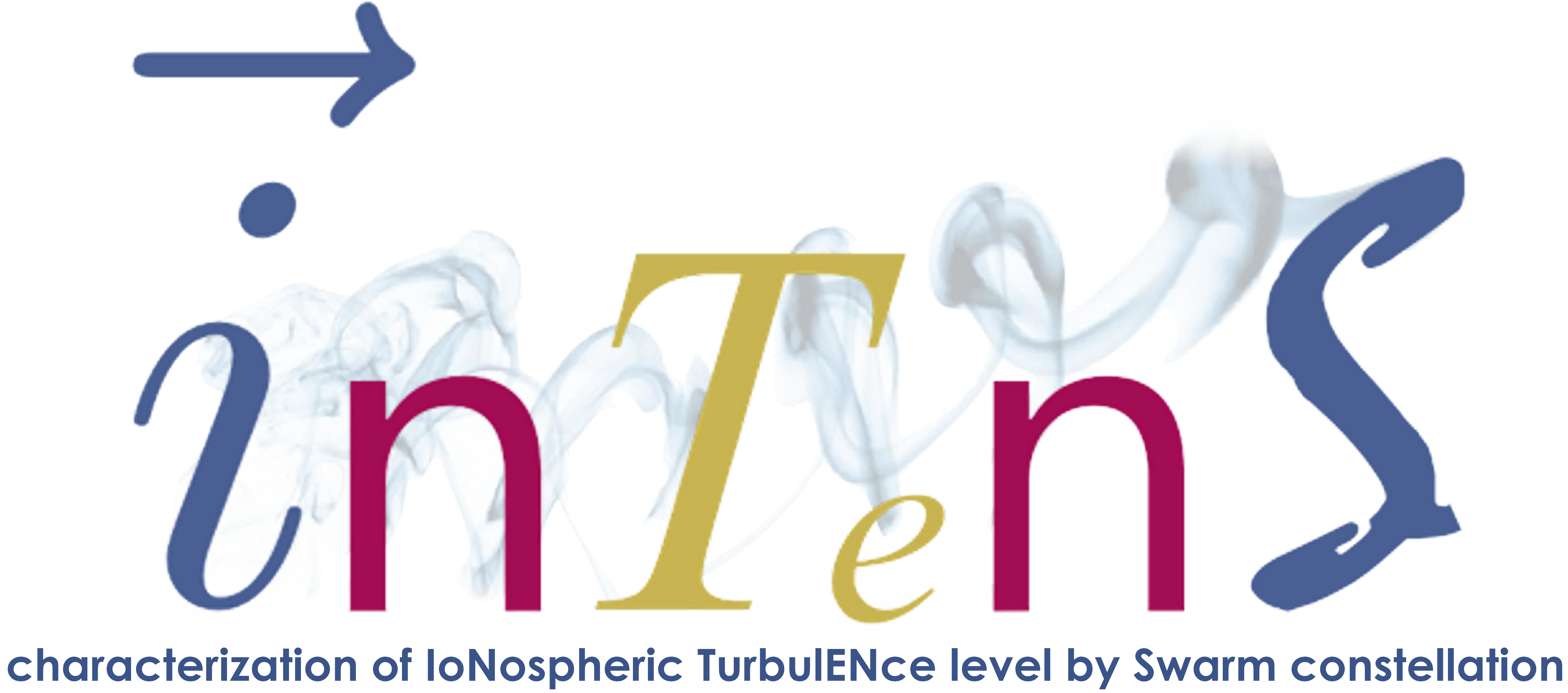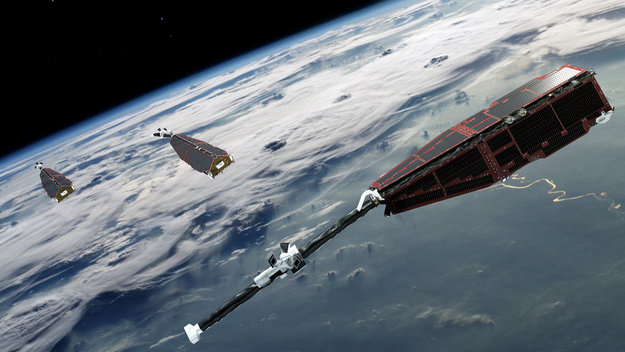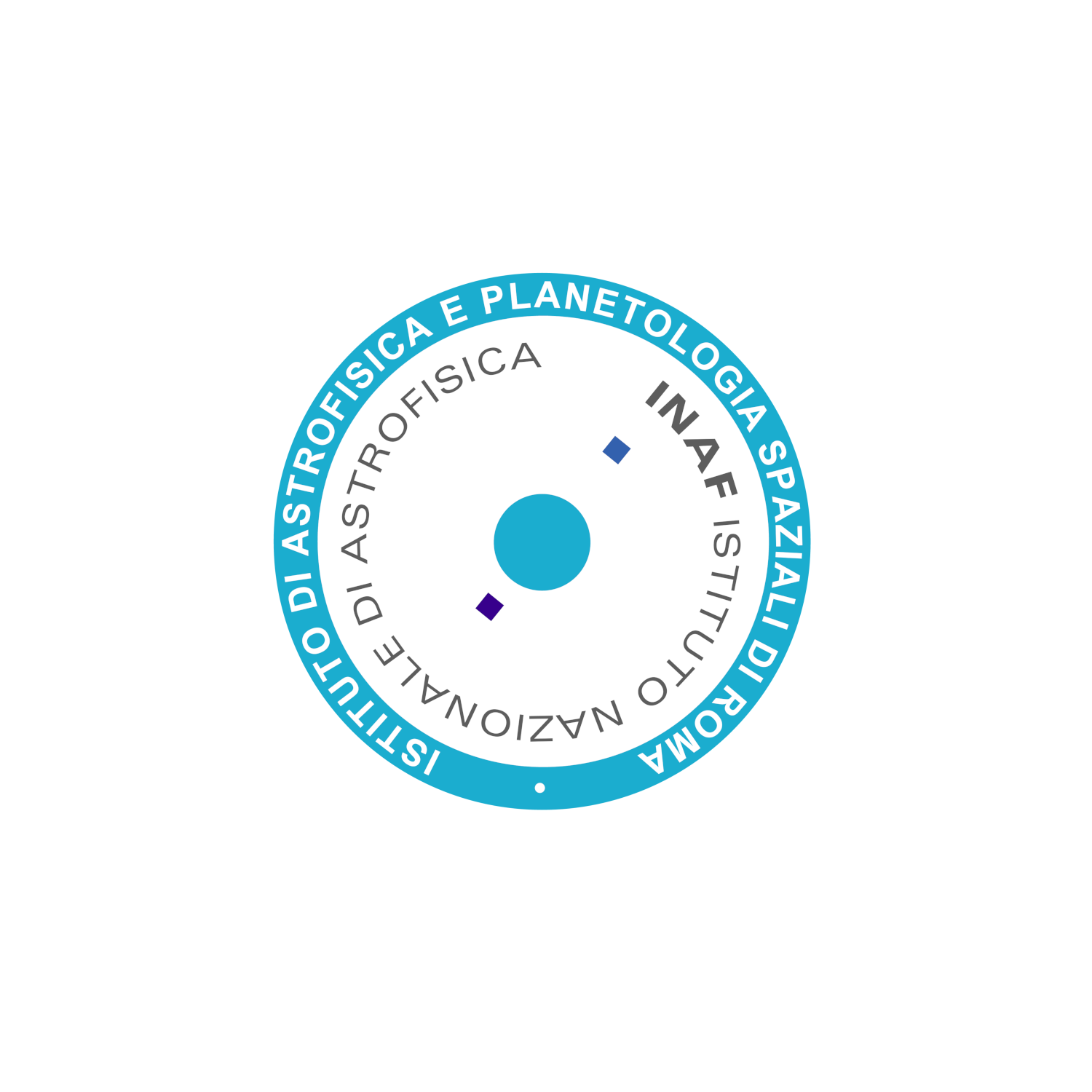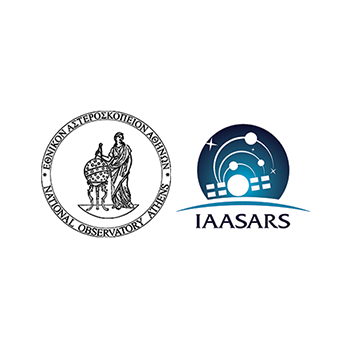Insights
For the readers who are interested in deepening the topics treated in the framework of INTENS, we suggest here a number of works, papers and links where the topics of the project are described in different ways: from the reviews to more specific papers. However, to begin we also provide a few outreach links where the matter is described using a simpler and more popular approach.
Outreach links:
- In "Encyclopaedia Britannica": https://www.britannica.com/science/turbulence
- https://arstechnica.com/science/2018/10/turbulence-the-oldest-unsolved-problem-in-physics/
- Space Weather Prediction Center, National Oceanic and Atmospheric Administration (USA), Education and Outreach.
- La missione Swarm e i "misteri" della turbolenza nella ionosfera terrestre : interview (in Italian) to Dr. Paola De Michelis for the INGV GEOSCIENZE TGweb.
General Bibliography on Turbulence and Turbulence applied to Space Weather:
Just to begin, you cannot miss the following reviews:
- Bruno R., V. and Carbone (2013), The solar wind as a turbulence laboratory, Living Rev. Solar Phys., 10.
- Frisch U. (1995), Turbulence: the legacy of A. N. Kolmogorov, Cambridge University Press.
- Pécseli H. (2016), Turbulence in the ionosphere, Chapter 24 of “Low Frequency Waves and Turbulence in Magnetized Laboratory Plasmas and in the Ionosphere” by H. Pécseli edit by IOP Science.
- Tsallis C. (2009), Introduction to Nonextensive Statistical Mechanics, Approaching a Complex World, Springer: New York, NY, USA.
Then, after the appetizers, the main courses (in bold the most seminal and important ones):
- Bhattacharyya A. (1990), Chaothic behavior of ionospheric turbulence from scintillation measurements, Geophys. Res. Lett., 17, 6, 733.
- Carbone V. and R. Bruno, Cancellation exponents and multifractal scaling laws in the solar wind magnetohydrodynamic turbulence, Ann. Geophys.,14, 777.
- Carrano C. S., and C. L. Rino (2016), A theory of scintillation for two component power law irregularity spectra: overview and numerical results, Radio Sci. 51, 789 doi:10.1002/2015RS005903.
- Chen Z., P. Ch. Ivanov, K. Hu, and H. E. Stanley (2002), Effect of nonstationarities on detrended fluctuation analysis, Phys. Rev. E, 65, 041107.
- Chen W., Z. Wang, H. Xie, and W. Yu (2007), Characterization of surface EMG signal based on fuzzy entropy, IEEE Trans. Neural Syst. Rehab. Eng., 15, 266–272.
- Dyrud L. , B. Krane, M. Oppenheim, H. L. Pécseli, J. Trulsen, and A. W.Wernik (2008), Structure functions and intermittency in the ionosphere plasma, Nonlin. Processes Geophys., 15, 847.
- Earle G. D. , M. C. Kelley, and G. Ganguli (1989), Large velocity shears and associated electrostatic waves and turbulence in the auroral F region, J. Geophys. Res., 94, 15,321, doi:10.1029/JA094iA11p15321.
- Ebeling W., and G. Nicolis (1992), Word frequency and entropy of symbolic sequences: A dynamical perspective, Chaos, Solitons Fractals, 2, 635–650.
- Galtier S., S. V. Nazarenko, A. C. Newell, and A. Pouquet (2000), Weak turbulence theory for incompressible magnetohydrodynamics, Journal of Plasma Physics, 42, 447.
- Galtier S., A. Pouquet, and A. Mangeney (2005), On spectral scaling laws for incompressible anisotropic magnetohydrodynamic turbulence, Phys. of Plasmas, 12, 092310.
- Golovchanskaya I. V., A. A. Ostapenko, and B. V. Kozelov (2006), Relationship between the high-latitude electric and magnetic turbulence and the Birkeland field-aligned currents, J. Geophys. Res., 111, A12301, doi:10.1029/2006JA011835.
- Golovchanskaya I. V. , and B. V. Kozelov (2010), On the origin of electric turbulence in the polar cap ionosphere, J. Geophys. Res., 115, A09321, doi:10.1029/2009JA014632.
- Grach S. M. , E .N. Sergeev, E. V. Mishin, and A. V. Shindin (2016), Dynamic properties of ionospheric plasma turbulence driven by high-power high-frequency radiowaves, Phys. Usp., 59, 1091.
- Hao B.-L. (1989), Elementary Symbolic Dynamics and Chaos in Dissipative Systems, World Scientific: Singapore, Singapore.
- Hartley R. V. L. (1928), Transmission of information, The Bell System Technical Journal, 7(3), 535-563.
- Hurst H. (1956), Methods of using long-term storage in reservoirs, ICE Proceedings, 5, 704, 519.
- Karamanos K., and G. Nicolis (1999), Symbolic dynamics and entropy analysis of Feigenbaum limit sets, Chaos Solitons Fractals, 10, 1135–1150.
- Katsev S. and I. L’Heureux (2003), Are Hurst exponents estimated from short or irregular time series meaningful?, Computers & Geosci., 29, 1085-1089.
- Keylock C. J. (2010), Characterizing the structure of nonlinear systems using gradual wavelet reconstruction, Nonlin. Processes Geophys., 17, 615-632.
- Khinchin A. I. (1957), Mathematical Foundations of Information Theory, Dover: New York, NY, USA.
- Kintner P. M. Jr. (1976), Observations of velocity shear driven plasma turbulence, Journal of Geophysical Research, 81, 5114.
- Kintner P. M. Jr., and C. E. Seyler (1985), The status of observations and theory of high latitude ionosphere and magnetospheric plasma turbulence, Space Sci. Rev., 41, 91.
- Kolmogorov A. (1941), The Local Structure of Turbulence in Incompressible Viscous Fluid for Very Large Reynolds’ Numbers, Doklady Akademiia Nauk SSSR, 30, 301.
- Kozelov B. V., and I. V. Golovchanskaya (2006), Scaling of electric field fluctuations associated with the aurora during northward IMF, Geophys. Res. Lett., 33, L20109, doi:10.1029/2006GL027798.
- Kozelov B. V., I. V. Golovchanskaya, A. A. Ostapenko, and Y. V. Fedorenko (2008), Wavelet analysis of high-latitude electric and magnetic fluctuations observed by the Dynamic Explorer 2 satellite, J. Geophys. Res.,113, A03308, doi:10.1029/2007JA012575.
- Mandelbrot B. B., and J. W. Van Ness (1968), Fractional Brownian Motions, Fractional Noises and Applications, SIAM Rev., 10(4), 422–437.
- McMillan B. (1953), The basic theorems of information theory, Ann. Math. Stat., 24, 196–219.
- Molchanov O. A., O. S. Akentieva, V. V. Afonin, E. A. Mareev, and E. Fedorov (2004), Plasma density-electric field turbulence in the low latitude ionosphere from the observation on satellites; possible connection with seismicity, Physics and Chemistry of the Earth, 29, 569.
- Mounir H., A. Berthelier, J. C. Cerisier, D. Lagoutte, and C. Beghin (1991), The small-scale turbulent structure of the high latitude ionosphere-Arcad-Aureol-3 observations, Annales Geophysicae, 9, 725.
- Muniandy, S. V. and S. C. Lim (2001), Modeling of locally selfsimilar processes using multifractional Brownian motion of Riemann-Liuouville type, Phys. Rev. E, 63, 046104.
- Nicolis G., and P. Gaspard (1994), Toward a probabilistic approach to complex systems, Chaos Solitons Fractals, 4, 41–57.
- Ott E., Yunson Du, K. R. Sreenivasan, A. Juneja and A. K. Suri (1992), Sign-singular measures: Fast magnetic dynamos, and high-Reynolds number fluid turbulence, Phys. Rev. Lett., 69, 2654.
- Parkinson M. L. (2006), Dynamical critical scaling of electric field fluctuations in the greater cusp and magnetotail implied by HF radar observations of F-region Doppler velocity, Annales Geophysicae, 24, 689.
- Peltier R. F., and J. Lèvy-Vehel (1995), Multifractional Brownian motion: definition and preliminary results, INRIA Preprint No. 2645, 1995.
- Pincus S.M. (1991), Approximate entropy as a measure of system complexity, Proc. Natl. Acad. Sci. USA, 88, 2297–2301.
- Pulkkinen A., A. Klimas, D. Vassiliadis, V. Uritsky, and E. Tanskanen (2006), Spatiotemporal scaling properties of the ground geomagnetic field variations, J. Geophys. Res., 111, A03305, doi:10.1029/2005JA011294.
- Rényi A. (1961), On measures of information and entropy, Proceedings of the fourth Berkeley Symposium on Mathematics, Statistics and Probability, pp. 547–561.
- Shannon C. E. (1948), A Mathematical Theory of Communication, Bell Syst. Tech. J., 27, 379-423.
- Spicher A., W. J. Miloch, L. B. N. Clausen and J. I. Moen (2015a), Plasma turbulence and coherent structures in the polar cap observed by the ICI-2 sounding rocket, J. Geophys. Res. Space Physics, 120, 10,959-10,978, doi:10.1002/2015JA021634.
- Sridhar S., and P. Goldreich (1994), Toward a theory of interstellar turbulence: I. Weak Alfvenic turbulence, Astrophysical Journal, 432, 612.
- Tam S., W. Y. Chang, P. M. Kintner, and E. Klatt (2005), Intermittency Analyses on the SIERRA Measurements of the Electric Field Fluctuations in the Auroral Zone, Geophys. Res. Lett., 32, L05109.
- Taylor G. I. (1983), The spectrum of turbulence, Proc. R. Soc. London, 164, 476.
- Vainshtein S.I., Yunson Du and K. R. Sreenivasan (1994a), Sign singular measure and its association with turbulent scalings, Phys. Rev. E, 49, R2521(R).
- Vainshtein S.I., K. R. Sreenivasan, R.T. Pierrehumbert, Vinay Kashyap and Anurag Juneja (1994b), Scaling exponents for turbulence and other random processes and their relationships with multifractal structure, Phys. Rev. E, 50, 1823.
- Wernik A. W., and K. C. Yeh (1994), Chaotic behavior of ionospheric scintillation: Modeling and observations, Radio Sci., 29, 135-144.
Previous papers on the topic by the INTENS team members:
- Consolini G., M. F. Marcucci, and M. Candidi (1996), Multifractal structure of auroral electrojet index data, Phys. Rev. Lett., 76, 4082-4086.
- Consolini G. and A.T.Y. Lui (1999), Sign-singularity analysis of current disruption, Geophys. Res. Lett., 26 (12) 1673-1676.
- Consolini G., and P. De Michelis (2005), Local intermittency measure analysis of AE index: The directly driven and unloading component, Geophys. Res. Lett., 32, L05101, doi:10.1029/2004GL022063.
- De Michelis P., I. A. Daglis, and G. Consolini (1997), Average terrestrial ring current derived from AMPTE/CCE-CHEM measurements, J. Geophys. Res., 102, 14,103-14,111.
- De Michelis P., G. Consolini and A. Meloni (1998) Sign singularity in the secular acceleration of the geomagnetic field, Phys. Rev. Lett., 81 (22), 5023-5026.
- De Michelis P., G. Consolini, and R. Tozzi (2015), Magnetic field fluctuation features at Swarm’s altitude: A fractal approach, Geophys. Res. Lett., 42, 31003105, doi:10.1002/2015GL063603.
- De Michelis P., G. Consolini, R. Tozzi, and M. F. Marcucci (2016), Observations of high-latitude geomagnetic field fluctuations during St. Patrick’s Day storm: Swarm and SuperDARN measurements, Earth Planets Space, 68, 105, doi:10.1186/s40623-016-0476-3.
- De Michelis P., G. Consolini, R. Tozzi, and M. F. Marcucci (2017), Scaling features of high latitude geomagnetic field fluctuations at Swarm altitude: Impact of IMF orientation, J. Geophys. Res. Space Phys., doi:10.1002/2017JA024156.
- De Michelis P., G. Consolini, R. Tozzi, F. Giannattasio, V. Quattrociocchi and I. Coco (2018), Features of magnetic field fluctuations in the ionosphere at Swarm altitude, Annals of Geophysics, 61, doi:10.4401/ag-7789.
- Giannattasio F., P. De Michelis, G. Consolini, V. Quattrociocchi, I. Coco, and R. Tozzi (2018), Characterising the electron density fluctuations in the high-latitude ionosphere at Swarm altitude in response to the geomagnetic activity, Annals of Geophysics, 61, doi:10.4401/ag-7716.





